Although it is hard to imagine, 250 years ago Bartram’s Garden was considered the hinterlands of Pennsylvania. In order to visit the area it would have been an arduous trek from the Delaware River neighborhoods where everyone lived to the Bartram Home. The journey would have included a few miles over land to Grays Ferry, then a boat ride down the Schuylkill. However, instead of being greeted by houses, factories and warehouses like you would see today (perhaps via a Philly Fun Tour), you would be met with woodland. That is, until you came across the stately home of the Botanist, John Bartram.
Today, the journey is much less challenging- we drove from our home in Delaware County, down Lindbergh Boulevard, and through the crowded neighborhoods of Southwest Philly to get there. Now, the estate offers a great view of Center City Philadelphia, and the opportunity to reconnect with nature in an otherwise heavily urbanized part of one of America’s great cities.
The forecast called for rain, but we’ve never been a family to change plans due to the weather. Just kidding, we are fair weathered around here, but still, we decided to challenge the rain that was coming, and head out on our local adventure. We were lucky, and the storms that were predicted held off.
One of the more than 30 gardens surrounding Philadelphia, ‘America’s Garden Capital’, Bartram’s Garden is a hidden gem. I say hidden only because outside of its immediate neighborhood, many folks in and around the city of Philadelphia either don’t know about it, or haven’t yet visited.
Hopefully, we can highlight some of the garden’s qualities and encourage more locals to make a point to visit this historic and beautiful property.

It is worth mentioning that our kids were excited to get stamps in their garden passport – an initiative through America’s Garden Capital to encourage visits to these local horticultural treasures. Give our kids a scavenger hunt or something to check off or get stamped, and they are in!
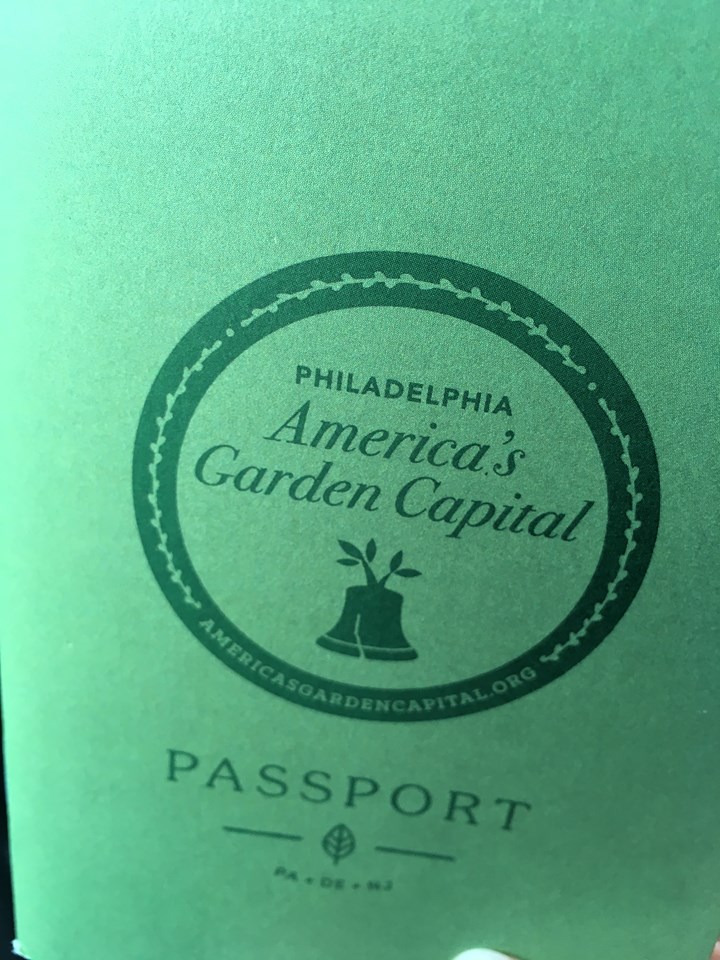
Bartram’s Garden is a labor of love, three generations of family grew the gardens to include over 1,400 native plant species and 1,000 exotics. Of note, it was John Bartram’s granddaughter who expanded the collection to include the exotic species, despite having to run her family business under her husband’s name – Colonel Robert Carr.
Another interesting tidbit for those of you who enjoy the Outlander fiction and television series – in the stories, Claire Fraser makes a visit to these gardens, probably to learn about and add to her medicinal collection of herbs and plants.
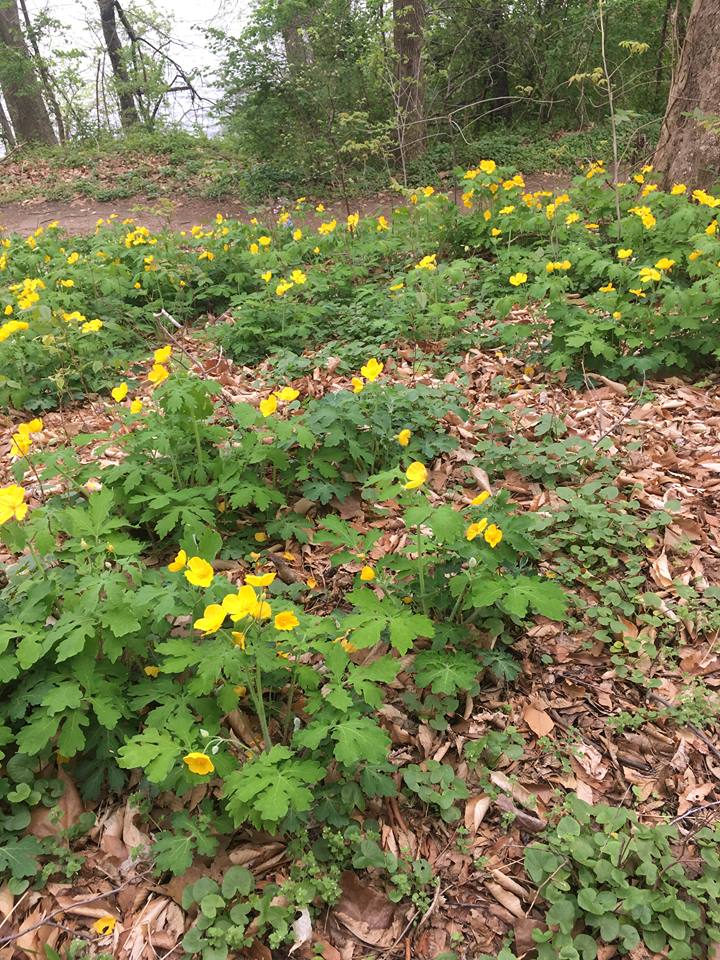
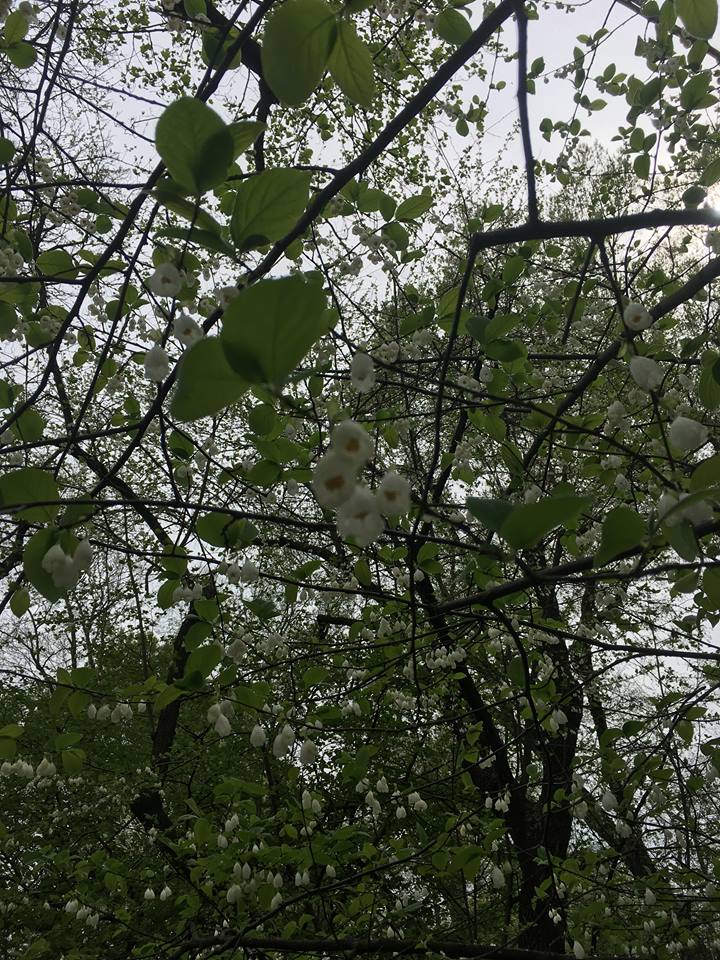
While it is free to walk the grounds of Bartram’s Garden, there are some tours available – such as the house tour- for a fee.
For our visit, we were joined by Elizabeth Bressi-Stoppe, president of the board. Together we toured the National Historic Landmark Bartram House. Our tour guide Heather gave us an engaging history of the home and family. Thank you to Liz and Heather!
An interesting fact – the front door of the home was originally facing the river, as that is how visitors would arrive. Later in the history of the house, an alternate ‘front door’ was put in once road travel was the more prevalent means of transportation. You can see the difference between the ornate door and columns of the original entrance, and the less elaborate new entrance.
There was lots of historical information shared about the Bartram’s, and we encourage you to read more here, and visit the home and take the tour yourself!
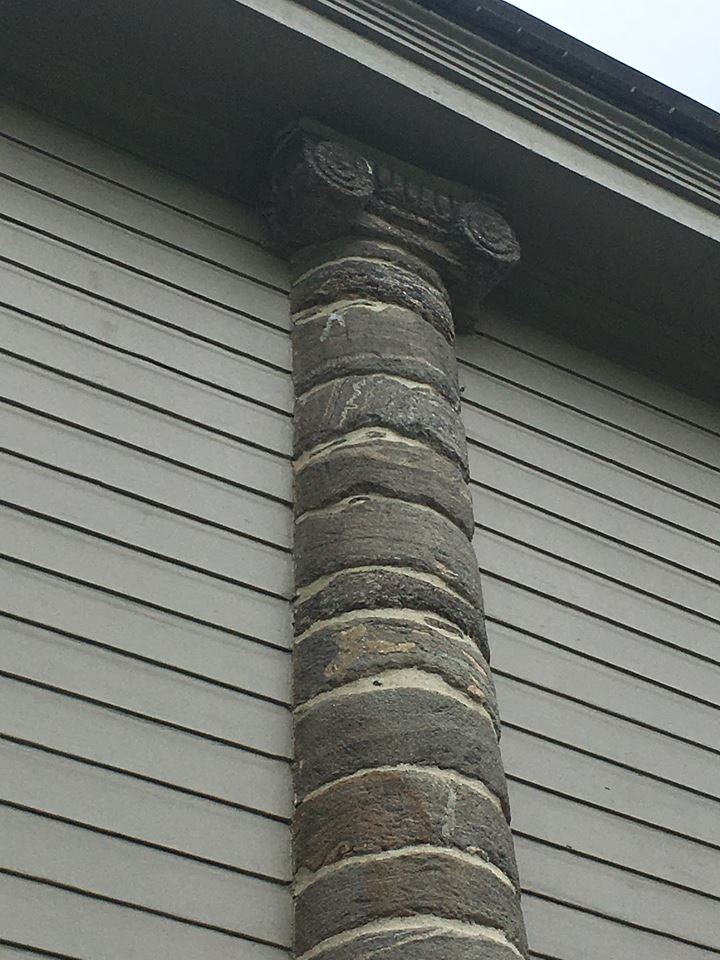
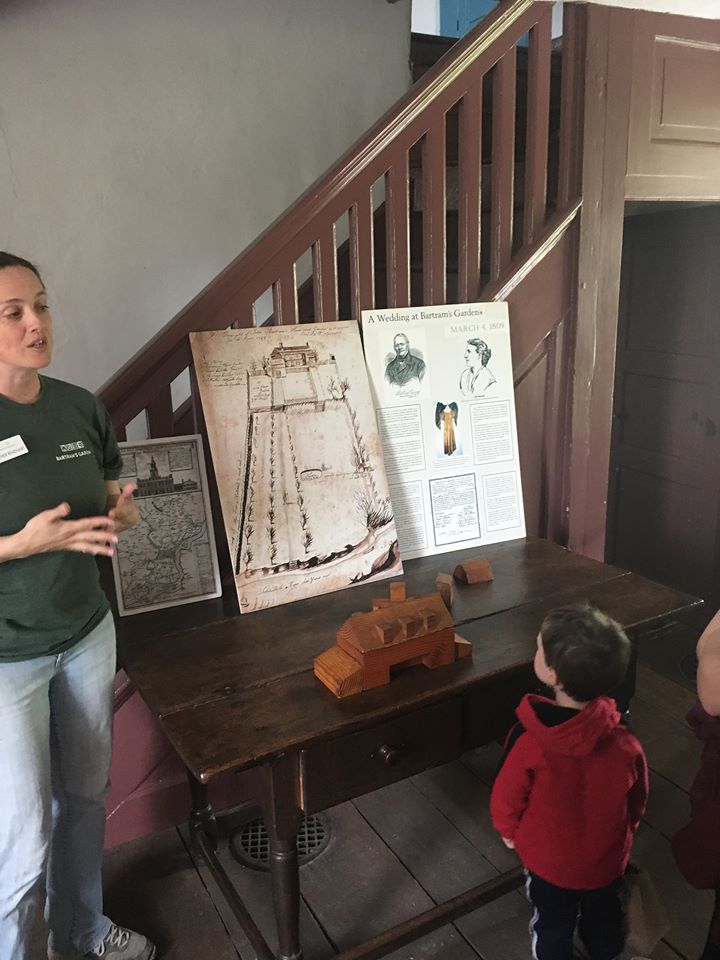
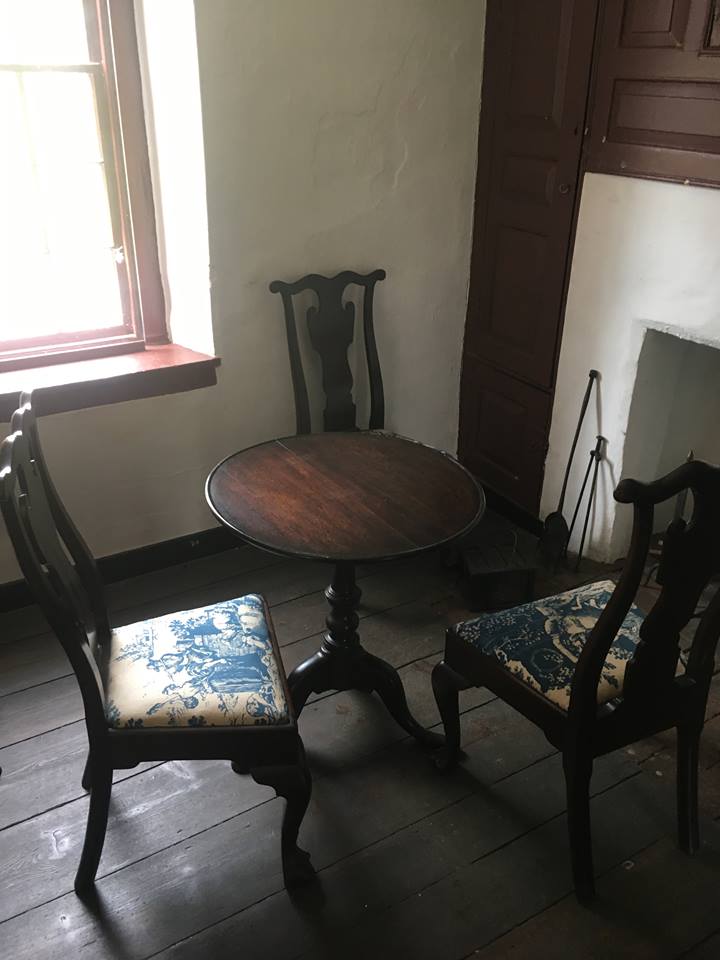
After our tour of the home, we explored some of the grounds. Although we were on property for three hours, we saw only a portion of what is available for the public. This is a property you can continue to visit and find new and interesting things each time that you do.
We walked through the kitchen garden of the home and down past a pond – to the “best tree swing of all swings ever made” – direct quote from our kids. We would have stayed at the swing for the entirety of our visit if the children had their way.
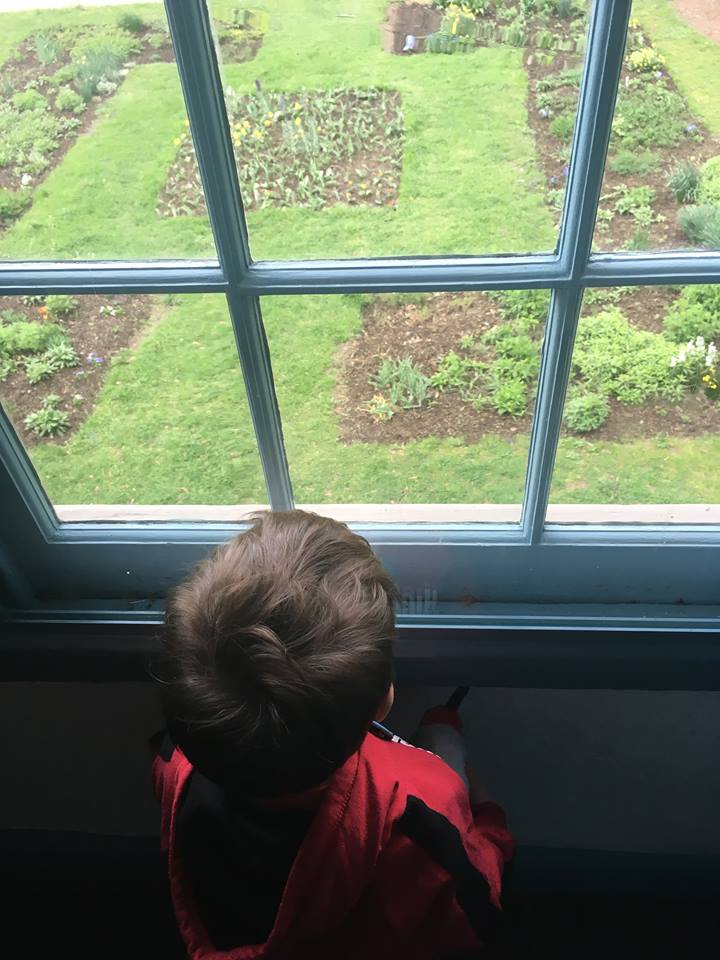
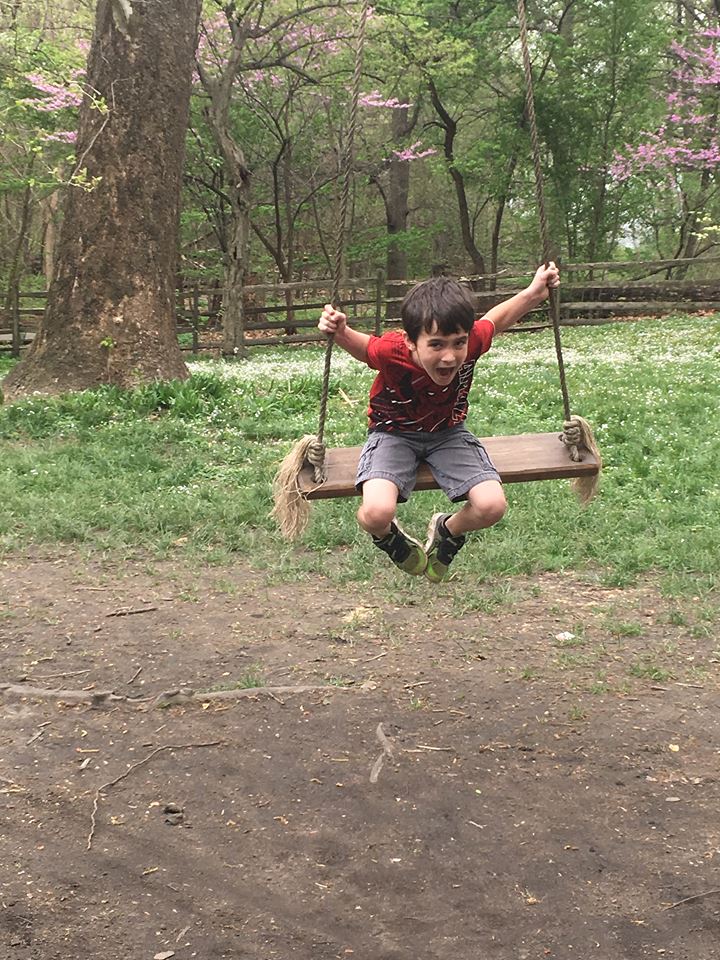
Once we were able to pry the kids from the swing (it’s always the simple things, amiright?), we walked down to the river. In one direction is the meadow and wetlands, and in the other direction is a cider press, boardwalk, and community boathouse. We chose to check out the cider press, boardwalk, and boathouse. I for one would never have guessed that this was a cider press…Anyone know how it works? We do, now that Liz explained it to us.
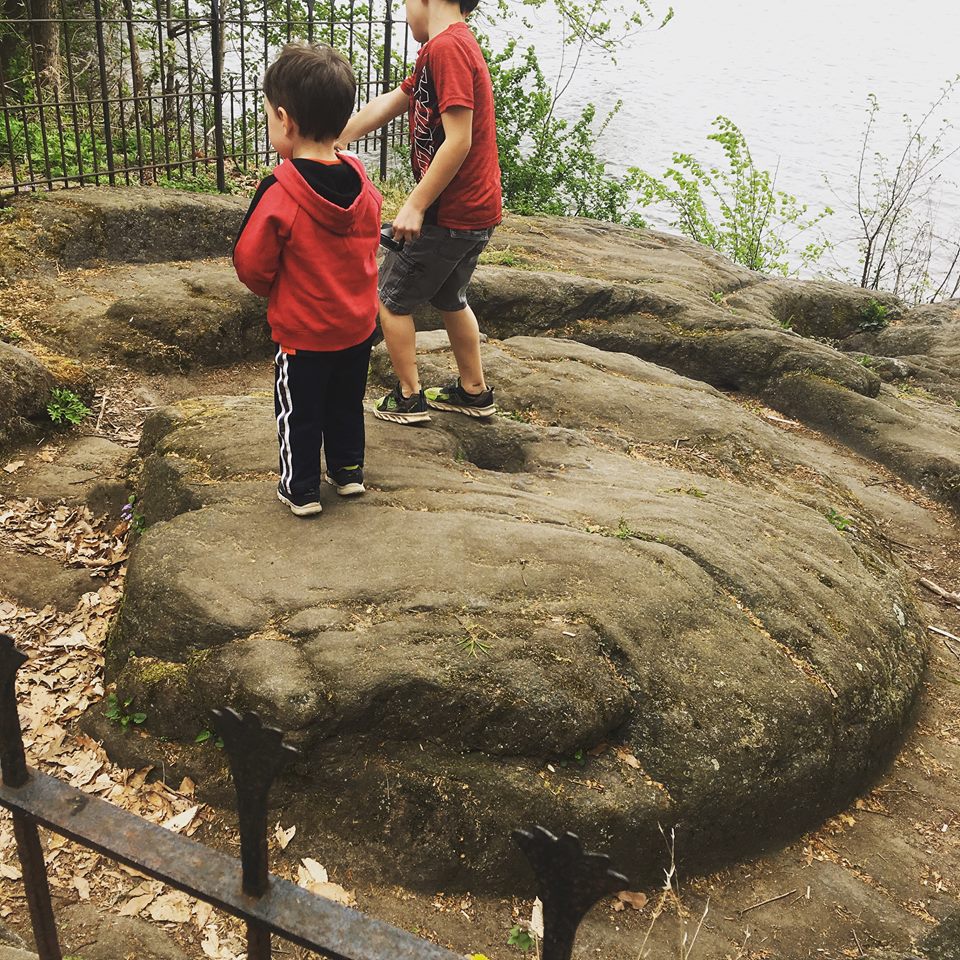
Down toward the boathouse are artistic structures, or ‘river rooms’, created by artist Stacy Levy. The kids enjoyed checking them out. Shawn may have proclaimed he was ‘King of the world’… There are many opportunities for arts in nature at Bartram’s.
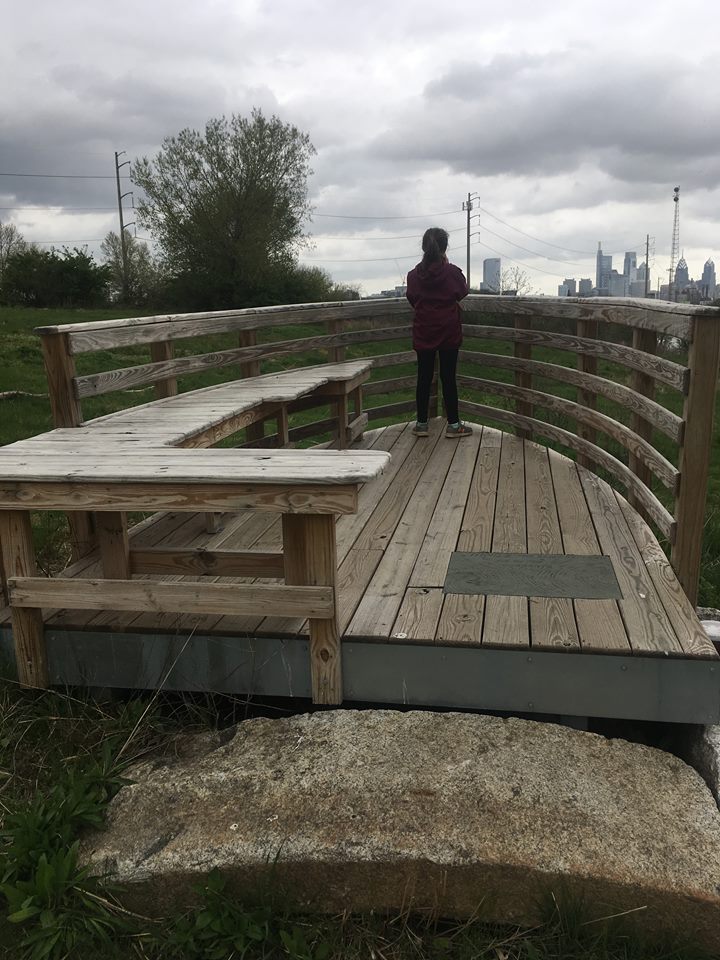
Something that I thought was super cool were the boats at the boathouse. They were each built and decorated by students from Richard Allen Preparatory Charter School, right in Southwest Philadelphia. Community, arts, education. It’s awesome!

During our visit we also got a glimpse inside the original barn, and the welcome center – where you can purchase honey made from the bees right there at Bartram.
Believe it or not, these are beehives … aren’t they cool?
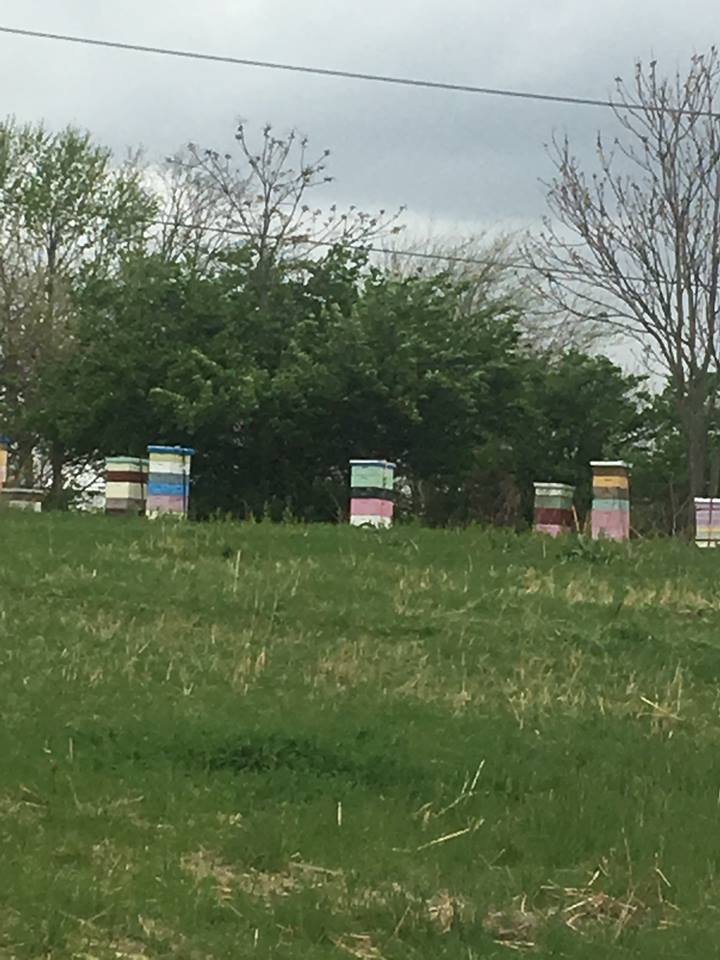

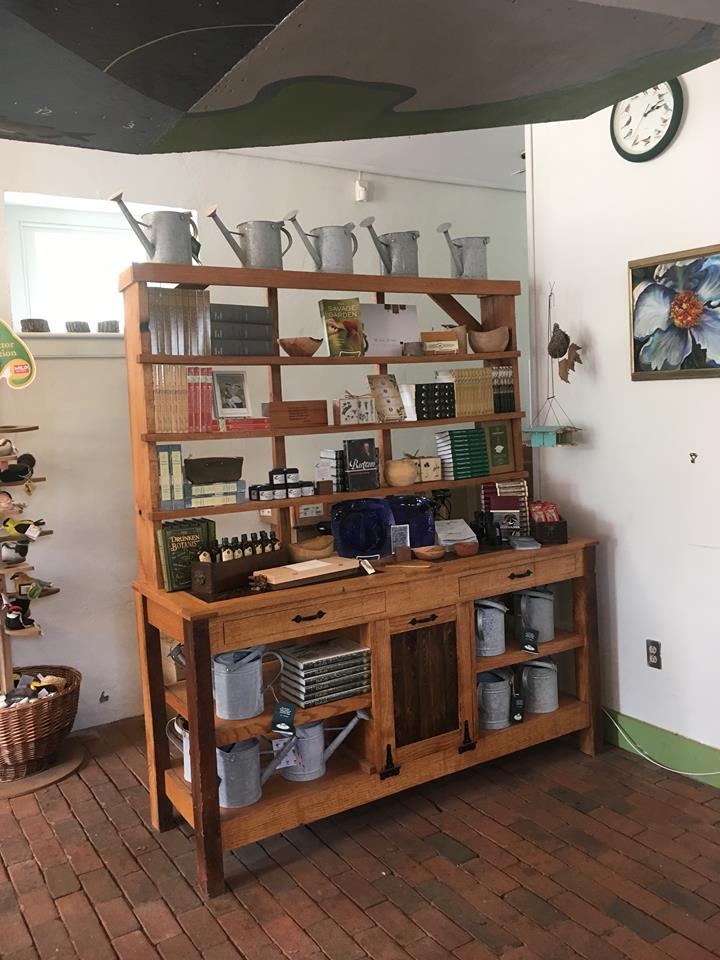
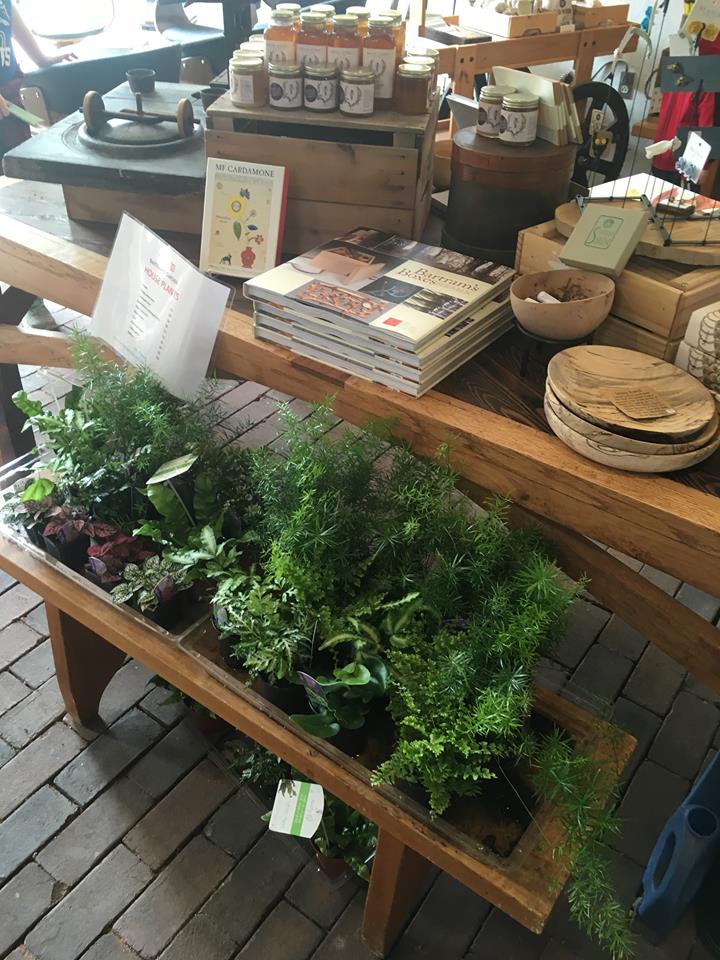
The really awesome thing about Bartram is how it is a space for the community in which it lies. It is a place for the members of the neighborhood to connect with and learn about nature and history. How plants are vital to life, and how ecosystems work. It is a space for teachers to bring their classes, and parents to bring their children. Even though Bartram’s Garden now sits on the edges of an urban neighborhood, you can quickly forget that you are in the city when walking through the gardens (if you don’t notice the skyline of center city Philadelphia beyond the Schuylkill river).
Here are some cool things about to happen at Bartram’s:
The ‘Bartram Mile’ trail along the river is set to connect to the Schuykill River Trail in the near future
There are plans to launch a mussel hatchery, which will help to filter and purify the Delaware, Schuylkill and Susquehanna Rivers. Read more about this fascinating natural purification system here.
An innovative merging of art, science, and architecture, the FloatLab will be the first of its kind. Read more about it here.
Whether you are local or further away, we highly recommend giving Bartram’s Garden a consideration. You won’t be disappointed.
In fact, there are always cool events happening at Bartram’s. Check out their calendar here.
At the time of this post, they are gearing up for SouthWest Spring Fest, which looks to have a lot of interesting things to do and see. Check it out!
Have you already been to Bartram’s Garden? Tell us about your visit!
To read about another local treasure, click here.
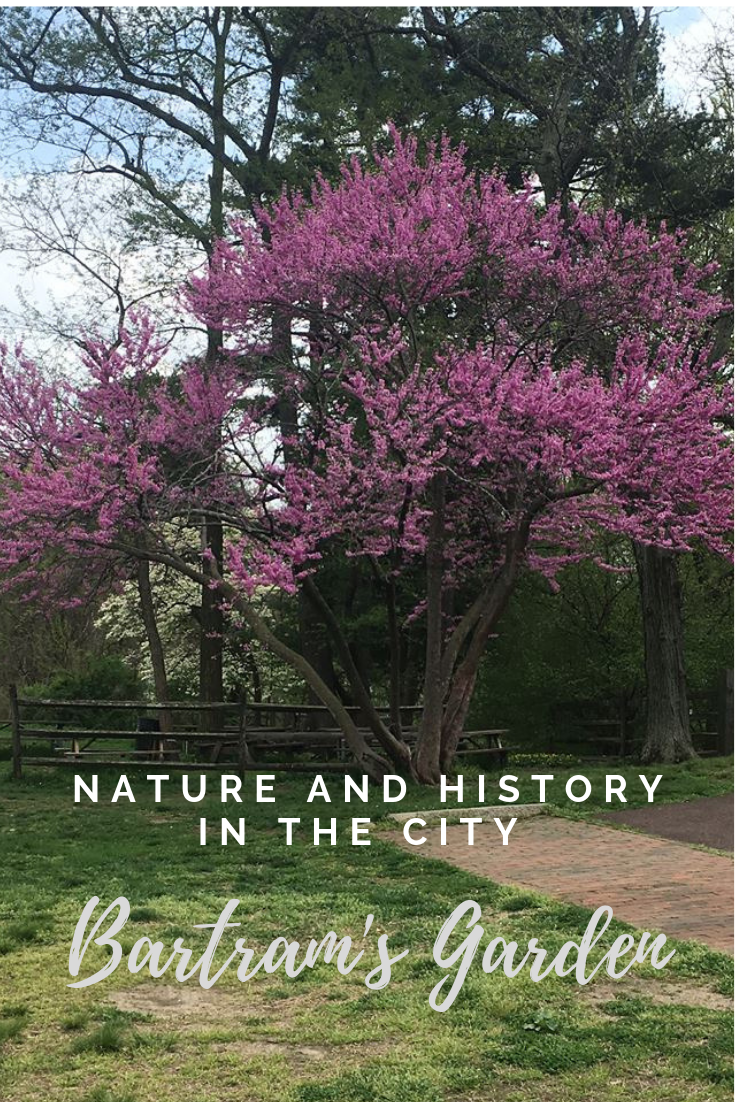

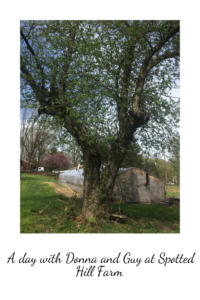
What a gorgeous place! I love learning the history of places so this looks like somewhere I’d love to visit.
I need to visit this place!
Stone buildings always amaze me. Just think of all the hard work that went into building them. Incredible.
I would go crazy in that gift shop too!!
What a lovely excursion! I’m a big history geek so really appreciate this.
I am a born and raised rocky mountain girl and have spent very little time on the east coast. I forget that it has the capacity to produce such beautiful and green gardens! Is it beautiful
Looks like the kids really enjoyed. This is a great day trip!
Adorable place. I’d like to hike the trail and get some of that local honey.
I would definitely do the house tour. Love old homes and history!
What a great place for beauty and history! It looks amazing!!
I love the Garden Passport. It’s a great keepsake to document your travels.
The flowers are so pretty! I would love to visit here one day so I’m adding it to my 2019 travel wishlist!
Would love to go there when we are in the area!
What a beautiful place. I love the photos of the boats. The swing would have been a hit with my boys when they were younger as well.
East Coast is amazing! I would love to visit all the gardens!
We have not been to Bartram’s Garden yet. I look forward to the Honey and playing on the swing!
So beautiful! I love learning the history of every place I visit.
That house is gorgeous! I love the community connections the gardens have and how they incorporate the now with history.